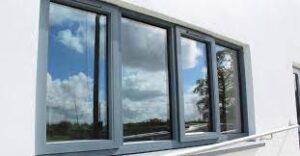
Vacuum windows, an innovation poised to revolutionize energy efficiency in buildings, represent a significant leap forward in glazing technology. These advanced windows, aluminium double hung window also known as vacuum insulated glass (VIG), utilize a vacuum layer between panes of glass to provide superior insulation properties compared to traditional double or triple glazing.
How Vacuum Windows Work
Traditional insulated glass units (IGUs) typically consist of two or three glass panes separated by air or inert gas, such as argon or krypton. The gas layer reduces heat transfer, improving thermal insulation. However, vacuum windows take this concept further by replacing the gas with a vacuum.
A vacuum, by definition, contains no matter, meaning it eliminates conductive and convective heat transfer. In vacuum windows, the two glass panes are separated by a tiny gap, often less than a millimeter, from which air has been evacuated, creating a near-perfect vacuum. Small pillars, usually made of a transparent material like glass or ceramic, are used to maintain the gap between the panes and prevent them from collapsing under atmospheric pressure.
Advantages of Vacuum Windows
- Superior Thermal Insulation: Vacuum windows significantly reduce heat loss, achieving U-values (a measure of heat transfer) as low as 0.3 W/m²K, compared to around 1.0 W/m²K for standard double glazing. This results in substantial energy savings for heating and cooling buildings.
- Thin Profile: Because vacuum windows achieve high insulation values with a very thin gap between panes, they can be much thinner and lighter than traditional double or triple-glazed units. This makes them suitable for retrofitting older buildings where the weight and thickness of modern glazing might be a concern.
- Noise Reduction: The vacuum layer not only insulates against heat but also provides excellent soundproofing, making vacuum windows ideal for buildings in noisy urban environments.
- Condensation Resistance: The vacuum layer in these windows prevents the internal condensation issues often seen in traditional double glazing, enhancing the durability and clarity of the window over time.
- Environmental Impact: By significantly reducing energy consumption for heating and cooling, vacuum windows contribute to lower greenhouse gas emissions, supporting global efforts to combat climate change.
Applications and Market Potential
The potential applications for vacuum windows are vast. They are particularly suited to residential and commercial buildings where energy efficiency is a priority. Additionally, their thin profile makes them ideal for historic building renovations, where maintaining the original architectural aesthetics is important.
The market for vacuum windows is expected to grow rapidly as awareness of their benefits increases and the technology becomes more cost-effective. Governments and environmental organizations are likely to play a crucial role in this growth by providing incentives and regulations that encourage the adoption of energy-efficient building materials.
Challenges and Future Developments
While vacuum windows offer numerous benefits, there are challenges to their widespread adoption. The manufacturing process is currently more complex and expensive than that for traditional IGUs, which can make vacuum windows less affordable. However, as production techniques improve and economies of scale are realized, costs are expected to decrease.
Future developments in vacuum window technology may include improvements in durability, with researchers exploring ways to enhance the longevity of the vacuum seal and the materials used for the support pillars. Additionally, integrating vacuum windows with smart technologies, such as electrochromic coatings that can change tint in response to sunlight, could further enhance their functionality and appeal.
Conclusion
Vacuum windows represent a promising advancement in building technology, offering superior thermal insulation, noise reduction, and environmental benefits. As the construction industry continues to prioritize energy efficiency and sustainability, vacuum windows are likely to become an increasingly common feature in modern architecture. Their adoption will not only contribute to more comfortable living and working environments but also play a crucial role in global efforts to reduce energy consumption and combat climate change.
